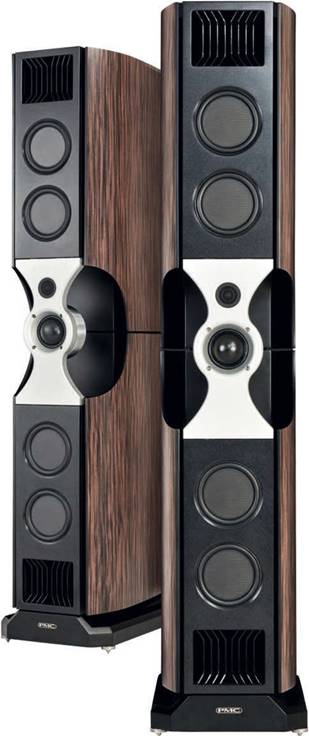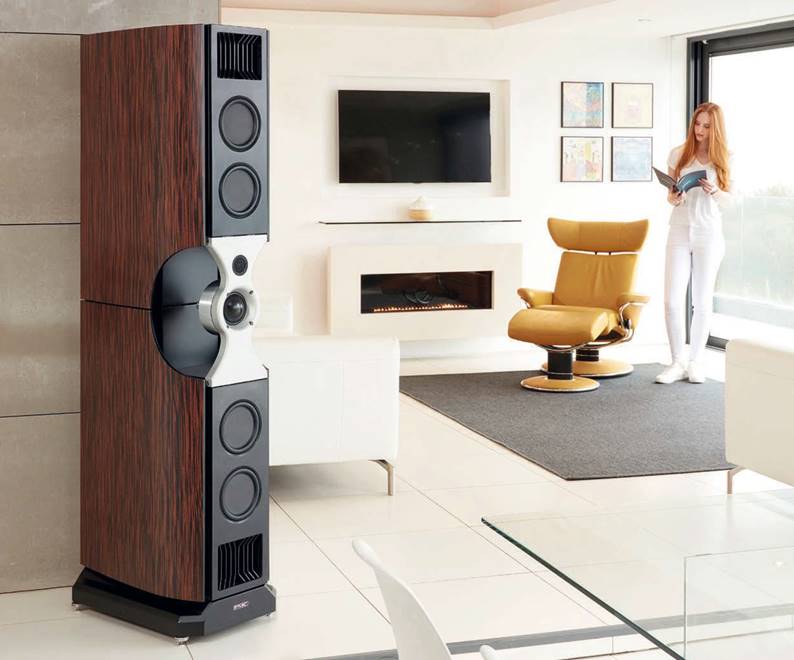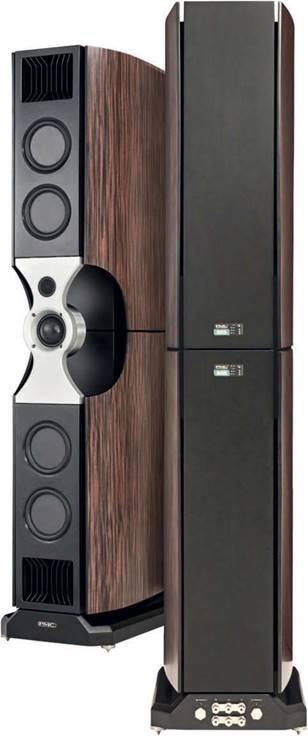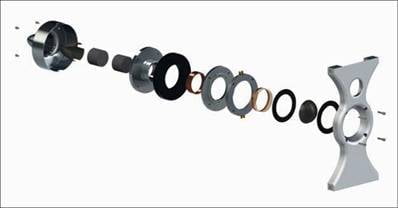PMC fact fenestria Review
This enigmatic phrase concludes the presentation of PMC’s flagship speaker on the manufacturer’s website. What does it mean? Simply put, it aims to fade into the background, letting the music shine, as explained by its designer. Quite simply…

PMC is an English speaker brand often mentioned in the pages of Diapason, and for good reason. Peter Thomas and his son Oliver have a clear vision of sound. Their concept is based on extensive experience in speaker design applied to sound control, with an impressive list of recording, television, and post-production studios equipped by them. PMC is one of those brands that designs everything from A to Z: speakers, filters, acoustic loads, and notably in the case of the Fact Fenestria, the Advanced Transmission Line (ATL). This type of loading allows the Fenestria to drop to 23 Hz without drag, using 16 cm flat carbon diaphragm speakers.
A Feat of Engineering
The heart of the Fenestria is called “the nest,” a massive aluminum module housing the two midrange and tweeter drivers, responsible for the six octaves richest in musical information, from 380 Hz to 25,000 Hz, the highest frequency the tweeter can reproduce. Admire the performance of a large diameter 75 mm soft dome midrange, capable of connecting very low, supported by a tweeter whose Sonomex diaphragm and Neodymium magnet allow it to reach very high frequencies with power. This nest is a feat of engineering. The midrange is loaded by an aluminum cavity with an ogive profile to ensure uniform and omnidirectional wave propagation.
This nest is placed in the center of the column, with a large opening at the back allowing the sound wave to propagate spherically.

Two identical transmission line cabinets are placed in a mirror on either side of the nest. Each contains two 16 cm speakers to generate a constant and rapid sound field, avoiding drag and excessive coupling with the room. Other refinements include the shape of the vents to reduce air flow noise and the presence of side panel mass dampers acting like gyroscopes to annihilate the energy emitted by the internal walls. All these techniques are implemented with the help of laser interferometry and engineering adapted from Formula 1.
Fine-Tuning the Listening Experience
The setup needs careful speaker-electronics coupling. The Fenestria can go very far with the right setup. One must consider the 4-ohm impedance (4 woofers in parallel) and a rather low efficiency of 86 dB/W/m (PMC recommends a minimum 200 W amplifier). For our listening test, we used a 25 m² auditorium, a PASS Labs XA30.8 class A stereo block (8,500 €), and the excellent Ristea PS-V01 balanced tube preamp (8,500 €). The CD player was an EAR Yoshino Acute (5,300 €), with Lavardin interconnects and Nimed speaker cables.
The natural sound immediately stands out, free from colorations found in ceramic, aluminum, or other membranes. Even at this efficiency level, the PASS Labs’ 2×30 W are sufficient to deliver ample and fluid sound. The low distortion rate enhances readability, transparency, and neutrality. Switching from one disc to another, it becomes clear: first, the tonal balance remains consistent, whether at low or realistic volume levels. Second, the speaker seems completely independent of the room, as if it fades away in favor of the music. The music unfolds in all directions, with millimetric precision in the placement of performers and without pronounced directivity.

Professional Sound Orientation
Each recording is “laid flat” and magnified. This reveals the professional orientation of these speakers, resulting in uncompromising design choices justified by neutrality, phase accuracy, transparency, and absence of distortion. They are true windows into the music, with no perceptible limits and no tension. Finding legitimate competitors for the Fenestria requires looking very far. Fenestria rhymes with Maestria…
Thanks to the Auditorium Alain Choukroun for enabling the listening session under optimal conditions.

Spectral Balance: 6/6
Dynamics: 6/6
Musical Quality: 6/6
Value for Money: 5.5/6
Pros: Transparency, balance, and 3D soundstage.
Cons: Efficiency requires a powerful amplifier.
Frequency Range: 23-25,000 Hz
Efficiency: 86 dB
Ways: 3
Speakers: 6
Crossover Frequencies: 380/3,800 Hz
Tri-wiring: Yes
Load Type: Acoustic line
Type: Column
Dimensions (WxHxD): 37x170x62.3 cm
Weight: 80 kg






